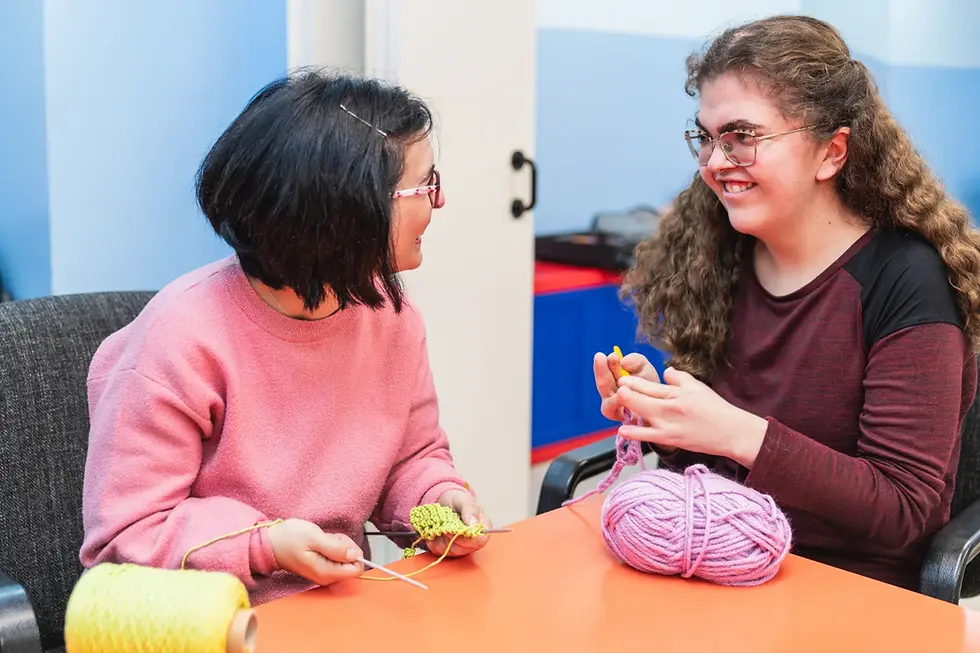The Purpose of a Community Engagement Plan
- Arthur Solomon

- Jan 18
- 3 min read
Updated: Mar 1
A community engagement plan is a structured approach to involving people with disabilities, their families, and support networks in decision-making processes that affect their lives. Its purpose is to ensure inclusivity, amplify diverse voices, and promote active participation in shaping policies, programs, and services.
Why Is a Community Engagement Plan Important?
Creating a community engagement plan is essential for several reasons:
Empowers People with Disabilities: It provides individuals with disabilities the opportunity to express their needs, preferences, and aspirations. This ensures that policies and services are person-centred and relevant.
Promotes Social Inclusion: By engaging people with disabilities in community activities, the plan fosters a sense of belonging and reduces social isolation.
Improves Decision-Making: Including diverse perspectives leads to more informed and effective policies that reflect the lived experiences of people with disabilities.
Builds Trust: Transparent and inclusive engagement builds trust between the disability community and policymakers or service providers.
Aligns with Legal Frameworks: In Australia, the Disability Services Act and Australia’s Disability Strategy emphasize the importance of involving people with disabilities in decisions that impact them.

Principles of Effective Community Engagement
Effective engagement plans are guided by principles such as:
1. Inclusivity: Ensuring all voices are heard, especially those who are often marginalised.
2. Accessibility: Providing information in formats suitable for everyone, including plain language or Auslan.
3. Collaboration: Working alongside individuals with disabilities, carers, and advocacy groups.
4. Transparency: Clearly communicating goals, processes, and outcomes.
5. Cultural Sensitivity: Respecting diverse cultural and linguistic backgrounds.
How to Create a Community Engagement Plan
Developing a successful engagement plan involves several steps:
1. Define Objectives
Identify what you aim to achieve through the engagement process.
Align your objectives with the principles of the Disability Services Act and Australia’s Disability Strategy.
2. Identify Stakeholders
Include people with disabilities, family members, carers, advocacy groups, local organisations, and service providers.
Consider priority groups such as Aboriginal and Torres Strait Islander people or culturally diverse communities.
3. Design Accessible Methods
Use multiple formats for communication (e.g., written materials, videos).
Offer online and in-person options to accommodate different needs.
4. Set Clear Processes
Outline how feedback will be collected (e.g., surveys, focus groups).
Specify how input will influence decisions.
5. Implement Capacity Building
Provide training to community members on how they can participate effectively.
Strengthen local organisations to support ongoing inclusion.
6. Monitor and Evaluate
Regularly review the effectiveness of your engagement strategies.
Seek feedback from participants to adapt to changing needs.
Examples of Successful Community Engagement
Several Australian initiatives demonstrate effective community engagement:
Inclusive SA: South Australia’s Disability Inclusion Plan focuses on removing barriers to participation and promoting equality for people with disabilities.
NDIS Engagement Framework: This framework emphasises co-design with participants to ensure meaningful outcomes.
Multicultural Inclusion Plans: Local councils like Northern Beaches Council work closely with cultural leaders to engage diverse communities effectively.

Aligning with the Disability Services Act
The Disability Services Act underpins community engagement by advocating for:
- The rights of individuals with disabilities to participate fully in society.
- The importance of consultation in developing policies that impact their lives.
- A commitment to improving access and inclusion across all sectors.
A well-designed community engagement plan is not just a procedural requirement—it is a tool for empowerment and inclusion. By actively involving people with disabilities in shaping their communities, you contribute to a more equitable society where everyone has a voice.
What steps will you take today to ensure your engagement efforts are truly inclusive?
Need assistance with Community Participation? Get in touch with us today to learn more about our community participation services across Wollongong and the Illawarra region. We’re ready to support you every step of the way!




Comments